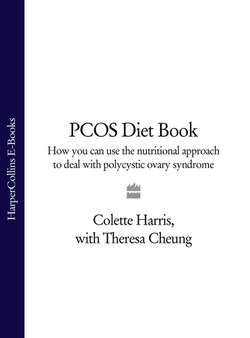Читать книгу PCOS Diet Book: How you can use the nutritional approach to deal with polycystic ovary syndrome - Theresa Cheung - Страница 49
How?
ОглавлениеIt’s quite simple, really. Just make sure you meet your daily fruit and vegetable food requirements. Plant-based foods are brimming with phytonutrients. The best strategy is to include a wide variety of colourful fruits and vegetables in your diet on a daily basis. Variety is the key. Eating a few apples and a banana a day is OK, but not as good as being more adventurous. Research shows that those who eat a diet with a varied mix of vegetables have a 20 per cent lower risk of colon cancer than those whose intake is less varied. A useful trick is to think about the colours of the rainbow when you choose your fruits and vegetables. A good selection of colours will mean that you get a good selection of phytonutrients. So aim for multicoloured meals – check orange, yellow, red, purple and green are all present by choosing foods such as mangoes, blackberries, cabbage, bell peppers, carrots, etc. The deeper the colour, the more phytochemicals are present.
The main groups of phytochemicals include: flavonoids (these give grapefruit its tartness and cherries their blush, and reduce the risk of heart disease and stroke); phytoestrogens (in soya, tofu, pulses and sprouts – they reduce the risk of breast cancer and improve bone strength); carotenoids (they give orange and green fruit and veg their colour and protect against heart disease, cancer and Alzheimer’s disease).
You’ll Like This
It’s only since the advent of phytochemical research that red wine has been found to be good for you (it’s packed with a phytochemical called reseveratrol). Also, 40 g of chocolate has a similar phytochemical content to a glass of red wine. It also has the undesirable type of fat and sugar, so has some disadvantages, but proves once again that everything can be good in moderation. Tea, especially green tea, is a rich source of phytochemicals. Four cups of green tea gives you optimal amounts of epicatechin, which has antioxidant, antibacterial, antiviral, anticancer and immune-enhancing properties. If you don’t like green tea, look for black tea blends with green tea added.
Vegetables highest in phytochemicals are cabbage, Brussels sprouts, cauliflower, broccoli and other green leafy vegetables. Fruits high in phytochemicals include tomatoes, cranberries and blueberries. The 30 best sources of phytochemicals identified to date are:
| apples | cherries | pineapples |
| eggplants | chillies | red bell peppers |
| avocados | garlic | red wine |
| bananas | grapefruit | rye |
| barley | green tea | sesame seeds |
| bean sprouts | leeks | soya (including tofu) |
| berries | milk | spinach |
| broccoli | oats | tomatoes |
| carrots | oranges | walnuts |
| celery | parsley | whole wheat |
